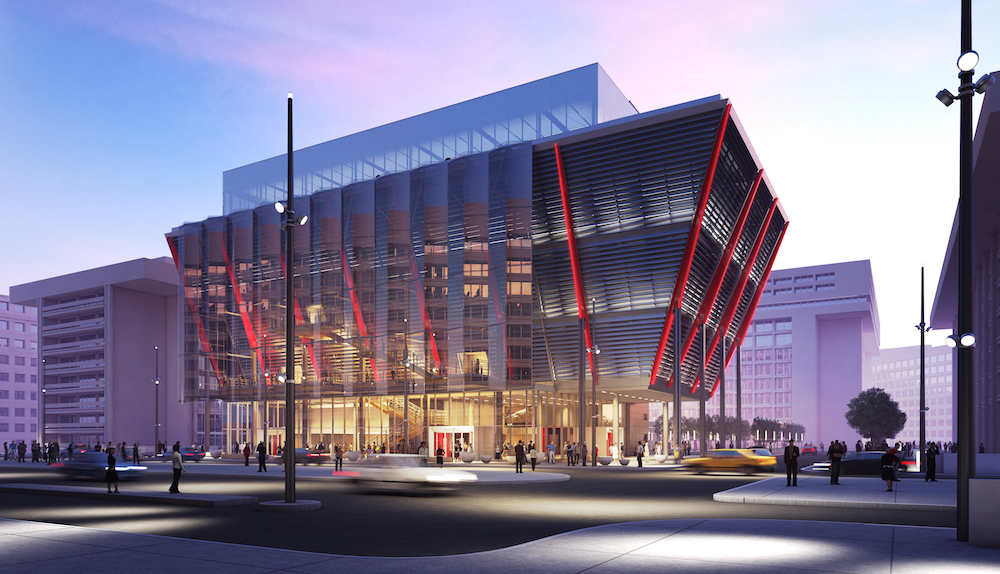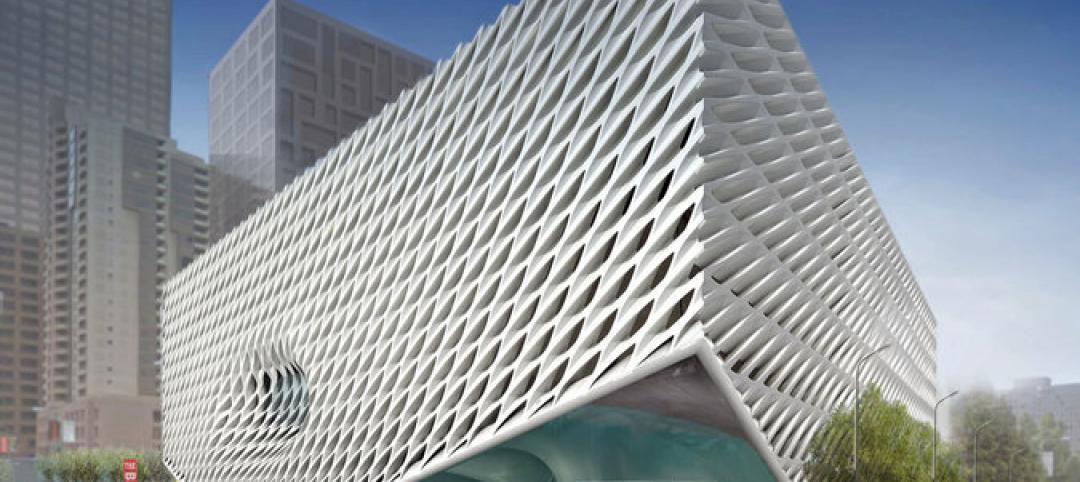The International Spy Museum in Washington, D.C., will be moving next year. If you want the new location of the museum you'll have to travel to a park in Partridge, Kan., where a package awaits you in a hollowed-out tree.
Just kidding! The museum says that it will relocate to a different spot in D.C., at L’Enfant Plaza between the National Mall and the Southwest Waterfront’s Wharf.
Construction has begun on the new 140,000-sf building. Designed by Washington, D.C.’s Hickok Cole Architects and London’s Rogers Stirk Harbour + Partners, the museum will have a glass veil wall in front of an enclosed black-box exhibition space, a setup that contributes to the museum’s “hiding in plain sight” theme.
The glass allows people to see activity inside and outside the museum, which the museum says will add energy to the L'Enfant Plaza. Considered a masterpiece when it opened, the plaza, which sits between a handful of commercial buildings with a shopping mall underneath, has been involved in renovation and demolition plans for years.
The building will have a theater and event spaces, and it will have more exhibition and educational spaces than its current location a few blocks north of the National Mall.
Opened in 2002, the International Spy Museum (SPY) contains exhibits that detail how spies recruit and train, make and break codes, and create false identities. Galleries of artifacts, photos, and videos show the history of espionage from Biblical times through the Cold War to today. The most popular special exhibit is Exquisitely Evil: 50 Years of Bond Villains, where visitors learn about the bad guys in the James Bond film series and how the franchise’s plots have adapted to changes in real-life spying.
The new museum will open in 2018 (Curbed Washington reports that the current museum’s lease doesn’t expire until the end of next year). The project’s developers are The Malrite Company and JBG Companies.
Related Stories
| Jun 18, 2014
Arup uses 3D printing to fabricate one-of-a-kind structural steel components
The firm's research shows that 3D printing has the potential to reduce costs, cut waste, and slash the carbon footprint of the construction sector.
| Jun 16, 2014
6 U.S. cities at the forefront of innovation districts
A new Brookings Institution study records the emergence of “competitive places that are also cool spaces.”
| Jun 13, 2014
First look: BIG's spiraling museum for watchmaker Audemars Piguet
The glass-and-steel pavilion's spiral structure acts as a storytelling device for the company's history.
| Jun 12, 2014
Tod Williams Billie Tsien Architects' design selected for new UCSC facility
The planned site is a natural landscape among redwood trees with views over Monterey Bay, a site that the architects have called “one of the most beautiful they have ever worked on.”
| Jun 12, 2014
Austrian university develops 'inflatable' concrete dome method
Constructing a concrete dome is a costly process, but this may change soon. A team from the Vienna University of Technology has developed a method that allows concrete domes to form with the use of air and steel cables instead of expensive, timber supporting structures.
| Jun 11, 2014
David Adjaye’s housing project in Sugar Hill nears completion
A new development in New York's historic Sugar Hill district nears completion, designed to be an icon for the neighborhood's rich history.
| Jun 9, 2014
Green Building Initiative launches Green Globes for Sustainable Interiors program
The new program focuses exclusively on the sustainable design and construction of interior spaces in nonresidential buildings and can be pursued by both building owners and individual lessees of commercial spaces.
| Jun 9, 2014
Eli Broad museum files $19.8 million lawsuit over delays
The museum, meant to hold Eli and Edythe Borad's collection of contemporary art, is suing the German company Seele for what the museum describes as delays in the creation of building blocks for its façade.
| Jun 4, 2014
Want to design a Guggenheim? Foundation launches open competition for proposed Helsinki museum
This is the first time the Guggenheim Foundation has sought a design through an open competition. Anonymous submissions for stage one of the competition are due September 10, 2014.
| May 29, 2014
7 cost-effective ways to make U.S. infrastructure more resilient
Moving critical elements to higher ground and designing for longer lifespans are just some of the ways cities and governments can make infrastructure more resilient to natural disasters and climate change, writes Richard Cavallaro, President of Skanska USA Civil.















